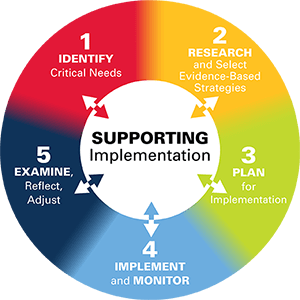“Continuous Improvement” refers to a formal and ongoing process of improving a system, process, or product that involves planning, data collection & analysis, and using those findings to inform changes that result in improvement over time. This process is often cyclical and outcomes- or goals-based. Education systems across the US have implemented cycles of continuous improvement to help keep moving forward. Read on to learn about more various cycles of continuous improvement.
The Ohio Improvement Process (OIP)
- Identify Critical Needs
- Research and Select Evidence-Based Strategies
- Plan for Implementation
- Implement and Monitor
- Examine, Reflect, and Adjust
From the website: The OIP includes, but goes well beyond, the traditional plan-do-study-act (PDSA) cycle. When viewed as an organizational strategy, rather than an exercise in compliance, the OIP gives districts a template through which focused and intentional action can take place. It brings educators together through collaborative team structures to learn from each other, and it facilitates communication and decision-making between and across levels of the system (district, central office, school, grade levels, content areas, classrooms). The team structures at the core of the OIP form peer-to-peer networks, giving more people a voice and allowing for the inclusion of multiple perspectives in guiding each district’s journey toward organizational learning and continuous improvement. Source: Ohio Improvement Process | Ohio Department of Education

